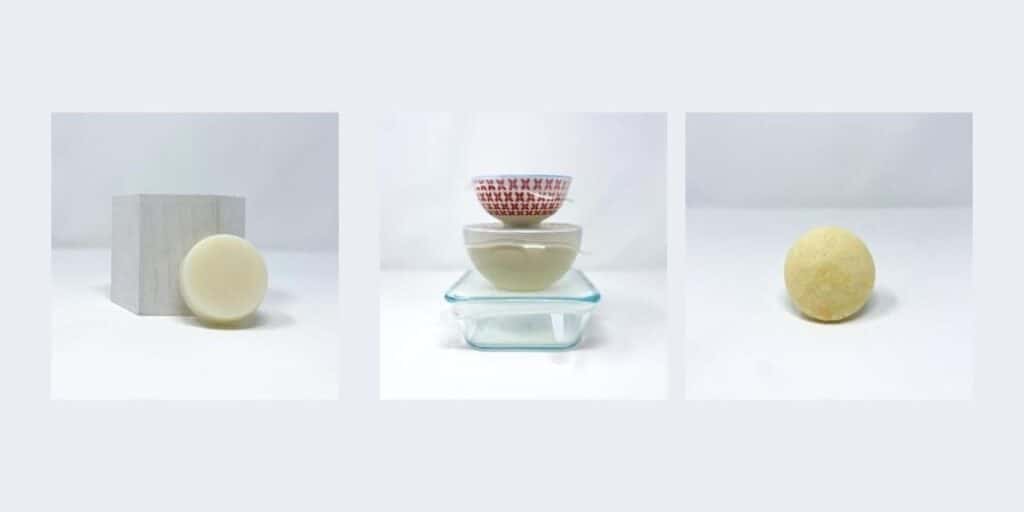Over a decade ago, when my son was a baby and I was becoming concerned with the state of the planet, I learned about the zero waste movement. I read about women who generated so little garbage it all fit in a mason jar. I, on the other hand, was knee-deep in disposable products and baby clothes that were only worn once or twice. The idea of zero waste seemed impossible.

Fast forward to 2021, and we’re living in a different world. Today you can rent baby clothes instead of buying them through a company like Borobabi. And reducing waste at home and in the office is becoming more convenient thanks to companies like ZeroWaste.com.
In this interview, Shannon Bergstrom explains what the zero waste movement is, how anyone can be part of it, and how the movement could continue to evolve this decade. Shannon is a sustainability operations manager at RTS, a tech-driven waste and recycling management company. She’s also a LEED Green Associate and TRUE waste advisor and she writes for ZeroWaste.com. The questions are mine, the answers are hers.
Zero waste is an eco-movement that aims to prevent waste from going to landfills, the ocean, and incinerators. It does this by challenging our “take, make, and waste” approach to production and consumption. Instead, it focuses on creating a circular economy where waste gets reused and natural resources are conserved. A more in-depth explanation can be found here: What is Zero Waste?
Reducing plastic waste is a big part of this movement because it’s abundant and only 9% is recycled. Plus, it isn’t infinitely reusable since it loses quality every time it’s recycled, so it eventually ends up in a landfill. However, plastic is only part of the equation as zero waste aims to keep all waste out of landfills. This includes all other materials, including organics like food waste.
Zero waste is helping to solve our plastic pollution crisis in a couple of ways:
1. As the zero waste movement gains traction, alternatives to plastic are becoming more widely available. This includes a surge in refilleries and bulk food shops where you can bring your own jars and containers, as well as an increase in products that trade out plastic for more sustainable material. Is it still hard to avoid plastic? Yes. But as the demand for zero waste increases, so will plastic alternatives.
2. The zero waste hierarchy – an expansion of the internationally recognized “Reduce, Reuse, Recycle” – encourages finding new uses for items that have outlived their original purpose. This means that even when plastic is unavoidable, zero waste encourages reusing an item before recycling by thinking of innovative ways to make it useful again and increase its lifespan.
Innovation in the form of compostable packaging and sustainable plant-based materials are on the rise, so we may very well see a lot more of that in the future. While realistically plastic isn’t going to disappear any time soon, the surge of zero waste alternatives and plastic bans across the globe will assist with reduction. By 2030, there will be even more alternatives and awareness around zero waste, so we have high hopes that plastic use will be on the decline.
With a circular economy, landfill waste would be greatly reduced and there would be less of a need for harvesting natural resources, which is exactly what zero waste is striving toward. In fact, the zero waste hierarchy is a great tool that can help both individuals and businesses shift away from a linear economy.
Zero waste doesn’t always present a perfect solution. And sometimes that means picking the lesser evil. While shipping products does produce emissions, creating new plastic also creates emissions, consumes energy, and requires natural resources. At this time, ZeroWaste.com does not accept returns to refill products. We are currently focusing on providing a curated selection of sustainable products to help people start and sustain their zero waste journey.
Extended producer responsibility means that whoever produces a product is later responsible for its management and disposal post-consumer either financially, physically, or both. This policy encourages product recovery, which, in turn, minimizes waste.
Product design is essential to add ease to a zero-waste lifestyle and help consumers reach their eco-goals. The more accessible and abundant sustainable products are, the easier it will be to reduce waste.
Companies need to look for ways to minimize waste throughout their supply chain. Therefore, this doesn’t just include what a product and its packaging is made of, but also their energy needs, transportation, and what happens to a product post-consumer.
Consulting the zero waste hierarchy is always a good place to start. General ideas to reduce waste through product production include using recycled materials and using them in their entirety, embracing sustainable packing, and lowering energy usage and carbon emissions.
Both. No effort is too small to contribute to the zero waste movement and make a difference. However, the more people we have on board, the better! In the words of The Zero Waste Chef, Anne Marie Bonneau, “We don’t need a handful of people doing zero waste perfectly. We need millions of people doing it imperfectly.”
Identify problem areas and start small. For example, if you’ve noticed a lot of paper in the recycling, you may want to try:
Asking everyone to print double-sided and reduce margins wherever possible.
Replacing filing cabinets with cloud-based storage to reduce the need to print.
Using scrap paper instead of sticky notes or going digital with notes.
Emailing material for meetings instead of providing handouts.
Getting employees on board with zero waste will also go a long way. They should understand why your company is striving to reduce waste, why they should care, and how they can help.
Reducing food waste is doable in any home and always a great place to start!
Beyond planning meals to avoid overbuying food, composting is essential for combating food waste. Composting reintroduces vital vitamins and minerals into the soil and also allows food to decompose aerobically (in the presence of air). This is crucial since when food decomposes without air—like in a landfill site—it produces greenhouse gases that contribute to global warming, such as methane.
The most popular at-home composting options include curbside pickup composting programs or a backyard composter.
Zero waste crafts where you reuse items that would usually get thrown out is a go-to. It is not only fun and engaging, but opens up the opportunity for discussion about why reusing and recycling is important. Activities to try include:
– Making dye from vegetable scraps
– Crafting a self-watering planter from a bottle
– Doing some art with cardboard from a cereal box
– For a zero-waste Christmas, there are always sustainable decorations you can make like dried oranges, pinecone ornaments, or snowflakes made from paper grocery bags.
ZeroWaste.com is a waste + recycling management company.
